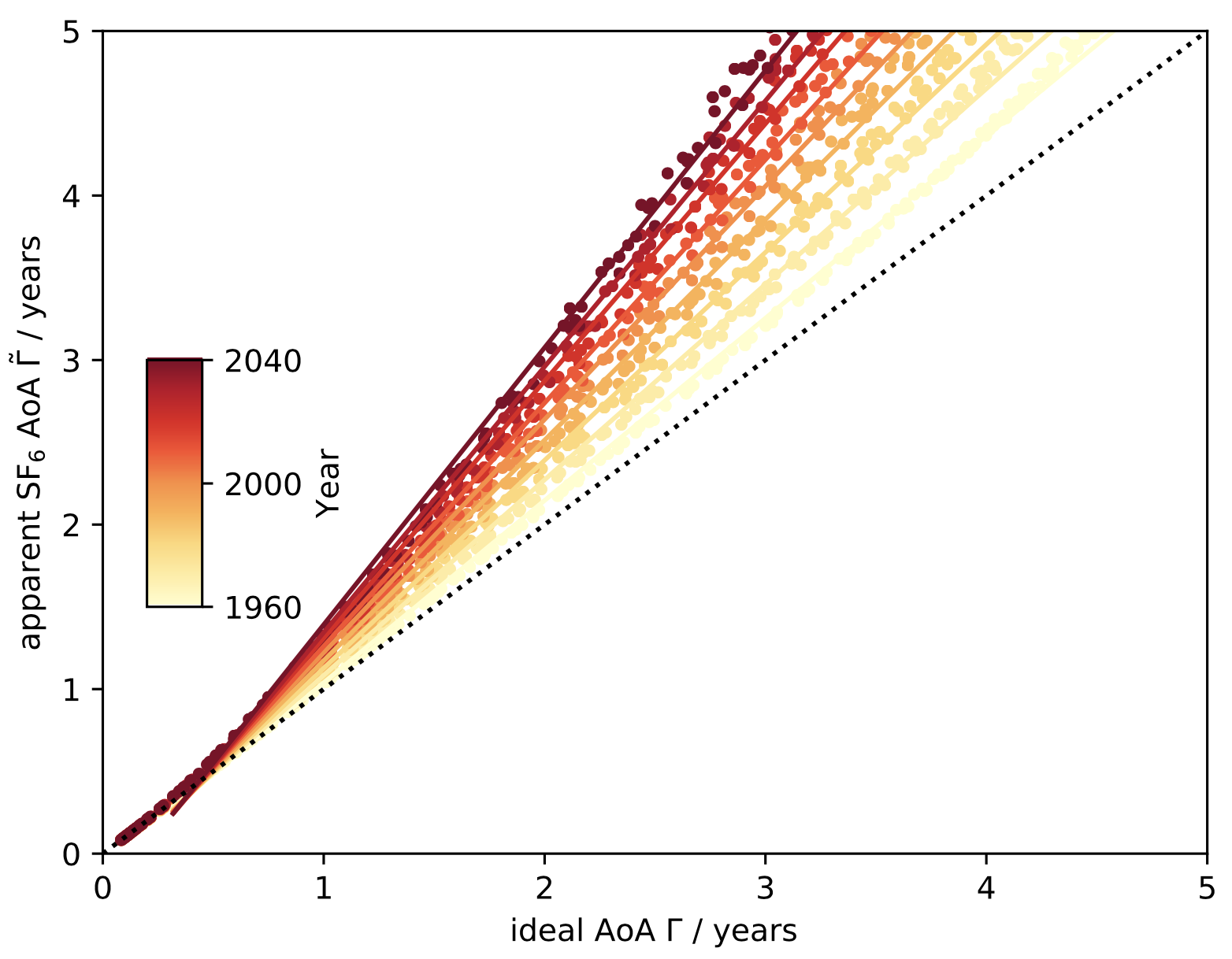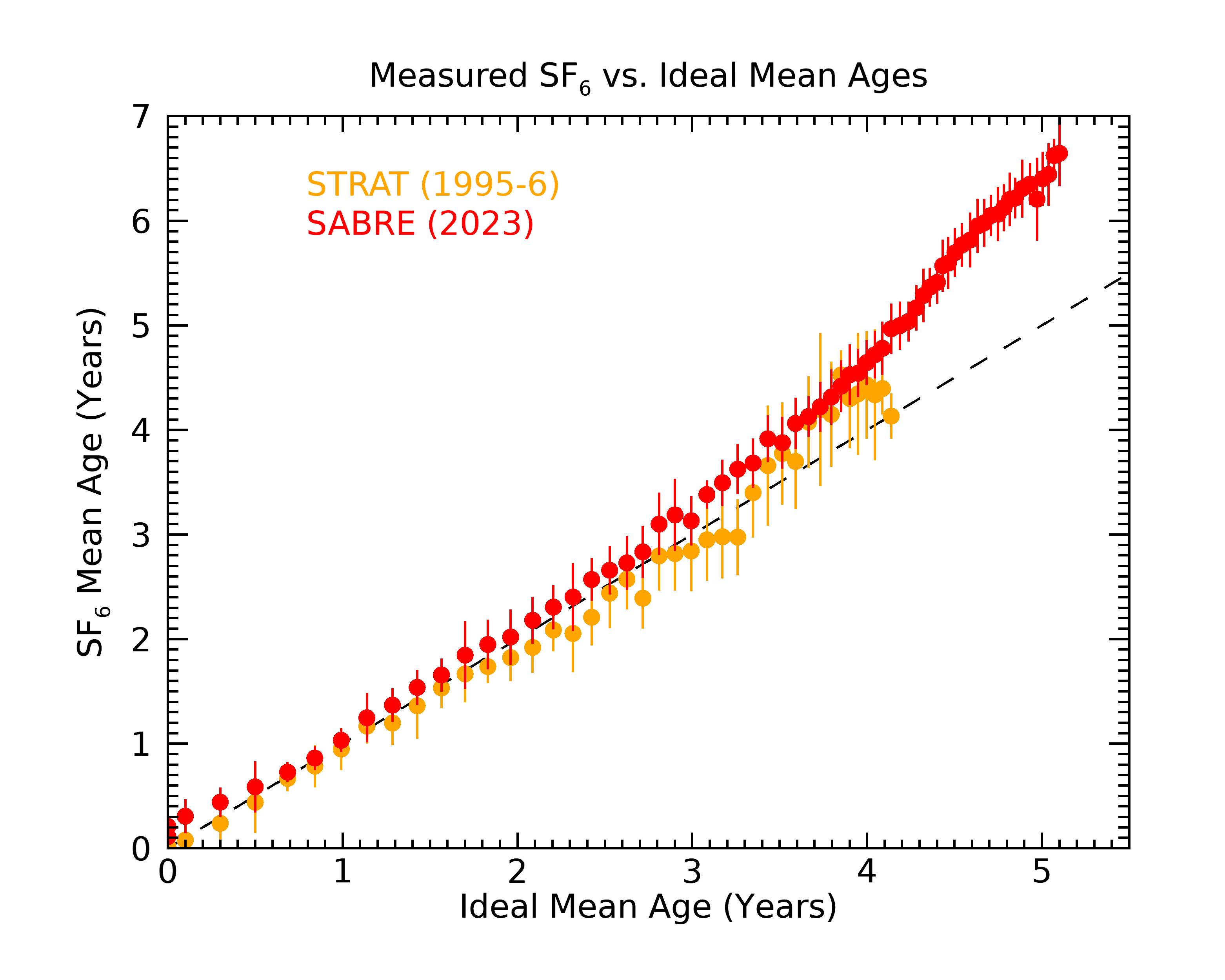The Evolution of SF6 as an Age of Air Tracer
E. Ray1, F.L. Moore2,3, E. Hintsa2, B.D. Hall3, G. Dutton2,3, D. Nance2,3, H. Garny4, B. Baier3, J. Li2,3 and C. Sweeney3
1NOAA Chemical Sciences Laboratory (CSL), Boulder, CO 80305; 303-579-2958, E-mail: eric.ray@noaa.gov
2Cooperative Institute for Research in Environmental Sciences (CIRES), University of Colorado, Boulder, CO 80309
3NOAA Global Monitoring Laboratory (GML), Boulder, CO 80305
4German Aerospace Center (DLR), Institute of Atmospheric Physics, Oberpfaffenhofen-Wessling, Germany
The long lifetime and steady growth rate of sulfur hexafluoride (SF6) have made it a useful trace gas to estimate the age of air in the atmosphere. This estimation is complicated somewhat by the loss of SF6 in the lower mesosphere due to free electron association. Mesospheric air with SF6 loss is transported down into the stratosphere, especially in the winter polar vortices where mean age derived from SF6 has been shown to be biased old due to the presence of air with substantial SF6 loss. Recent theoretical and modeling work has shown that since the amount of SF6 loss is proportional to the mixing ratio, which has grown larger by several times over the past few decades, the deviation of SF6 mean ages from the ideal mean age is also expected to have grown larger over this time period. In this work we compare mean age estimates from aircraft campaign and balloon measurements of SF6, as well as other mean age tracers such as CO2 and nitrous oxide (N2O), over the past several decades, including measurements from the recent DCOTTS and SABRE aircraft missions and AirCore flights. We use a newly developed correction technique to adjust observed SF6 mean ages based on the year and latitude of the measurements to help evaluate the theoretical and model-based estimates of the evolution of SF6 mean age biases over time.
Figure 1. Theoretical SF6 mean age bias compared to idealized modeled mean ages colored by year from 1960-2040.
Figure 2. SF6 mean ages from the STRAT (1995-6) and SABRE (2023) aircraft campaigns vs. an idealized mean age based on CO2 and N2O measurements from many aircraft campaign measurements.


